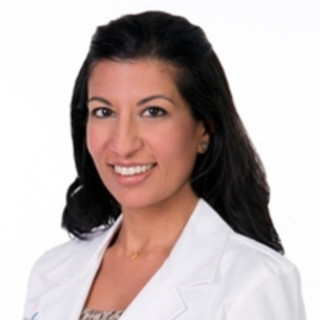The virtual format was not the only difference at the 2021 American College of Radiology annual meeting. While governance and economics typically run the show, equity dominated this year’s agenda — from Dr. Reshma Jagsi’s Moreton lecture and Dr. Geraldine McGinty’s presidential address to the CME and council sessions. These discussions examined the radiologist’s role in the health care system, addressing health disparities and shared decision making for cancer screening, as well as within our field, evaluating how to recruit and retain women and minorities and make improvements to family leave for trainees. Each demonstrated an understanding that equality assumes equivalent starting points, while equity recognizes that different parties might have unique circumstances that require an individualized approach.
As a breast imager, I have long understood that the role of a radiologist extends well past the reading room, and — in 2021 — it includes ensuring access to the services we offer, particularly those like lung, breast, and colon cancer screenings. This access means more than advocating for insurance coverage. The COVID-19 crisis exposed the gaps in the healthcare system, and we need to meet our patients at their starting points to deliver true equity. We must educate and empower our patients to improve their health literacy and counter rampant misinformation. At the same time, we must understand their cultural constraints and break down barriers from language and location to hesitancy and fear.
One of the meeting’s CME sessions discussed Shared Decision-Making (SDM), which has been mandated by the Centers for Medicare and Medicaid Services (CMS) for lung cancer screening computed tomography (CT) since 2015. Although SDM aims for a patient-centered approach, low utilization of lung cancer screening in the US suggests that these guides have fallen short in their mission, despite insurance coverage and the United States Preventive Services Task Force (USPSTF) guidelines. This suggests the need for a multi-disciplinary approach to improve the uptake of these lung cancer screenings. Additionally, the COVID-19 crisis entered an already complex healthcare climate, a focus of several sessions where radiology leaders offered a range of tools to help radiologists work with their patients to overcome their healthcare obstacles.
To establish equity within our profession, we must do more than provide equal resources and instead really understand the distinct hurdles faced by different subgroups of our colleagues to address the needs of each. Dr. Jagsi’s keynote Moreton Lecture offered an evidence-based approach to promoting equity for women in our field. She discussed how the COVID-19 crisis disproportionately affected women across medicine due to the demands of childcare and how, in returning to post-pandemic work, this population of working moms may demand more flexible work schedules, a permanent virtual set-up, or more protected sick and family leave. These issues affect not just the women in our field but those who go on choosing another specialty in lieu of radiology. Despite the number of women in medicine continuing to increase, the proportion of those choosing radiology has not. The American Association for Women Radiologists (AAWR) reported in 1981 that 23% of all United States residents in a medical specialty were women, while only 21% of radiology residents were women. According to the 2019 ACR Workforce Survey, only 23% of practicing radiologists were women. A lack of female mentors and role models may contribute to this decreased recruitment, so the retention of our current women in radiology becomes even more important.
The disproportionately low numbers of women in radiology are not just a public relations problem. Multiple studies show that health outcomes are more favorable with patient-physician gender concordance. We must attract candidates and professionals that reflect the populations we serve to deliver the healthcare they deserve. This returns to our role in health equity and shows the interplay of diversity and inclusion for both our patients and our profession.
Like the images we interpret, these challenges are complex and in shades of gray, calling for a diverse set of skills and approaches. In this current landscape, radiologists must move out of the darkroom and into a space where we can join forces with our colleagues across medicine to ensure equity to our patients and those within our profession. I thank the ACR for recognizing the importance of these issues and providing the tools, resources, and space for growth and collaboration.
Illustration by Jennifer Bogartz







